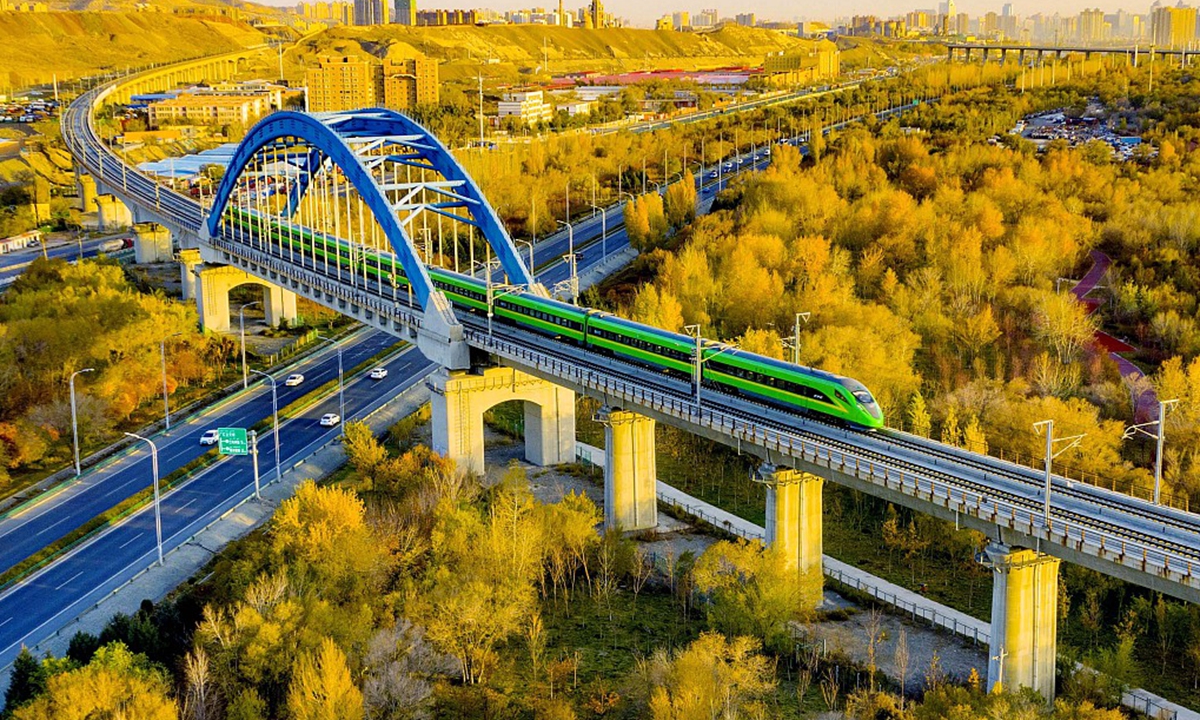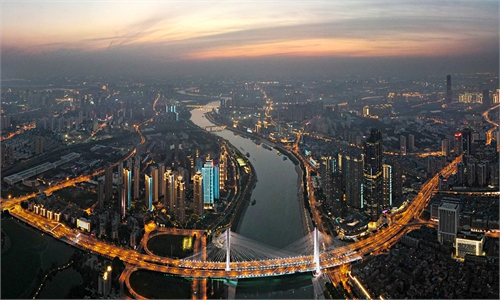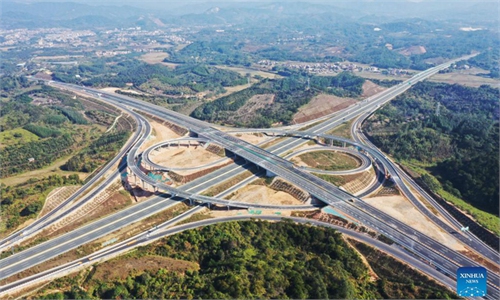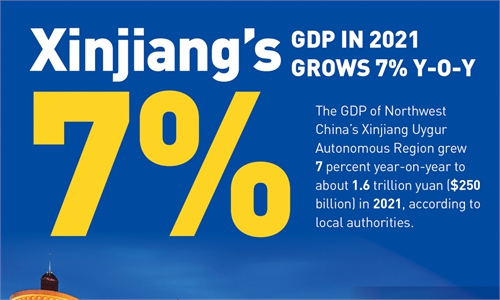Chinese localities aim for 5%-plus growth in 2022, focus on investment, industrial upgrade

GDP Photo:VCG
All 31 provincial-level regions on the Chinese mainland announced their economic growth targets for 2022 as of Monday, with most of them aiming for expansion of 5-7 percent, the latest signal that the Chinese economy as a whole could expand by above 5 percent this year despite pressure from COVID-19 and other factors.Emphasis has been placed on measures to ensure steady growth and improve the economic structure, such as infrastructure construction, the development of urban clusters, and scientific and technological innovation, according to local government work reports that were released.
Analysts believe that the main tasks for local governments in 2022 will be to fine-tune policy measures to meet multiple priorities, including economic growth and environmental protection.
Based on the local GDP growth targets, analysts predict that China's national GDP growth in 2022 will be about 5-6 percent.
Of the three major driving forces of economic growth, investment and consumption will be the main drivers for most provinces.
The epidemic has had a significant impact on consumption but a relatively limited impact on investment and industrial production, analysts said.
"Industrial growth is likely to be the key to sustaining economic growth. The new-energy sector will lead manufacturing investment to become a major driver. Policies may focus on carbon neutrality and strengthening industry chains to boost manufacturing investment," a senior investor and independent analyst surnamed Cheng based in Shanghai told the Global Times.
Cheng added that "it is expected that the annual growth rate of manufacturing investment will reach 11.1 percent."
According to local government work reports, provinces will accelerate the development of transport facilities such as railways and expressways, as well as other infrastructure such as energy, agriculture, environmental protection and logistics.
Governments will also increase support for upgrading traditional industries to make them high-end, intelligent and green.
For instance, Beijing, which set a 5-percent GDP growth target, pledged to maintain its investment level at 100 billion yuan ($15.8 billion) and will promote the upgrading of advanced, sophisticated and high-tech industries, especially to promote the construction of the Xiaomi electric vehicle plant and Li Auto's green and smart factory.
The Beijing Municipality will also launch 20 major application scenarios and develop high-level autonomous driving demonstration zones 3.0.
Northwest China's Shaanxi Province vowed to increase investment in the 5G network, the next-generation internet, the Internet of Things and other key areas.
As an economic powerhouse with a GDP of more than 12 trillion yuan, South China's Guangdong Province will focus on promoting steady investment growth in 2022, conducting 1,570 key projects with a total investment of about 7.67 trillion yuan.
It also plans an annual investment of 900 billion yuan, an increase of 12.5 percent compared with 2021.
The growth rate of infrastructure construction will be 3.5-5.5 percent in 2022, higher than in 2019 before the pandemic, according to a macroeconomic report by Topsperity Securities.
In 2022, infrastructure is expected to drive economic growth by 0.8 percentage points and manufacturing by 1.1 percentage points, while total fixed-asset investment will drive growth by 2.1 percentage points.
Investment in infrastructure will be carried out appropriately and in advance across China, said analysts.
"Investment will help boost the upgrading and transformation of industries, thus promoting consumption and creating new demand," Tian Yun, former vice director of the Beijing Economic Operation Association, told the Global Times on Monday.
A comparison of government work reports for 2021 and 2022 showed that keywords such as stable growth, high quality, dual carbon targets, investment, manufacturing, market players and digital economy have increased in frequency. Scientific and technological innovation, reform, ecology and consumption are still the most frequently seen keywords.
For provinces that are strong in foreign trade, like East China's Jiangsu, which set its target at 5.5 percent, and Zhejiang Province, with a target of 6 percent, the targets remained flat and conservative from 2021.
But Tian said that China's exports will remain strong in 2022, as the shortage of global supplies and the disruption of industrial chains due to the pandemic are expected to last, while China's industries will operate smoothly.




